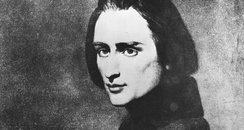

He was an unrivaled musical transcriber who, by arranging others’ symphonic works for the piano, made music more accessible to a general public. He produced new sounds and effects that relied on extreme technical prowess at the keyboard. He created the symphonic poem and wrote instrumental music, piano works, and sacred choral music. When he died in 1886, at age 74, Liszt left behind some 1,400 works. “Some commentators consider him to be the greatest musician of the 19th century-greater even than Beethoven in terms of all-around musicianship, and in terms of his impact on performance,” Doran says.

“His sex appeal, his looks, his magnetism-all those things became important, as they’d never been important for a musician before.”īut by no means was Liszt all flash and flamboyance. “It was a very similar phenomenon” to the Beatles craze, says Robert Doran, an associate professor of French and comparative literature. German poet Heinrich Heine, his contemporary, invented a term for the sensation he created: “Lisztomania.” Women vied to garner scraps of his hair or clothes or broken piano strings. More than a hundred years before Beatlemania, audiences went wild for pianist and composer Franz Liszt, in thrall to his charisma and dramatic musicianship. Most important musical transcriber, who made music newly accessible to the publicĬhampion of the musical avant garde of his day Performer and composer who pushed the boundaries of piano technique to their limits To the audience, and performing from memory Franz Liszt-who once famously declared “Le concert, c’est moi”-changed classical music in a dizzying number of ways:Ĭreator of many of the conventions of modern piano performance, including the pianist entering from the wings, playing in profile


 0 kommentar(er)
0 kommentar(er)
